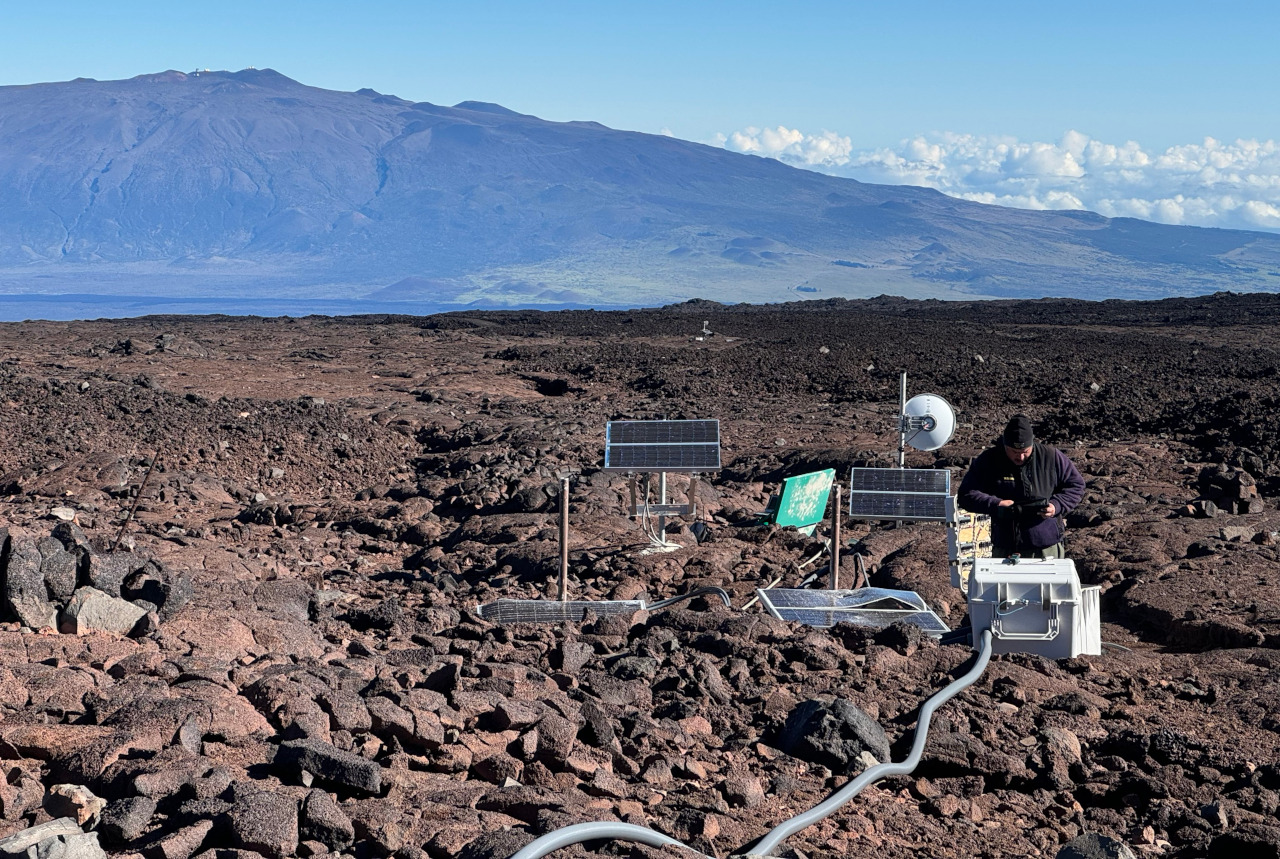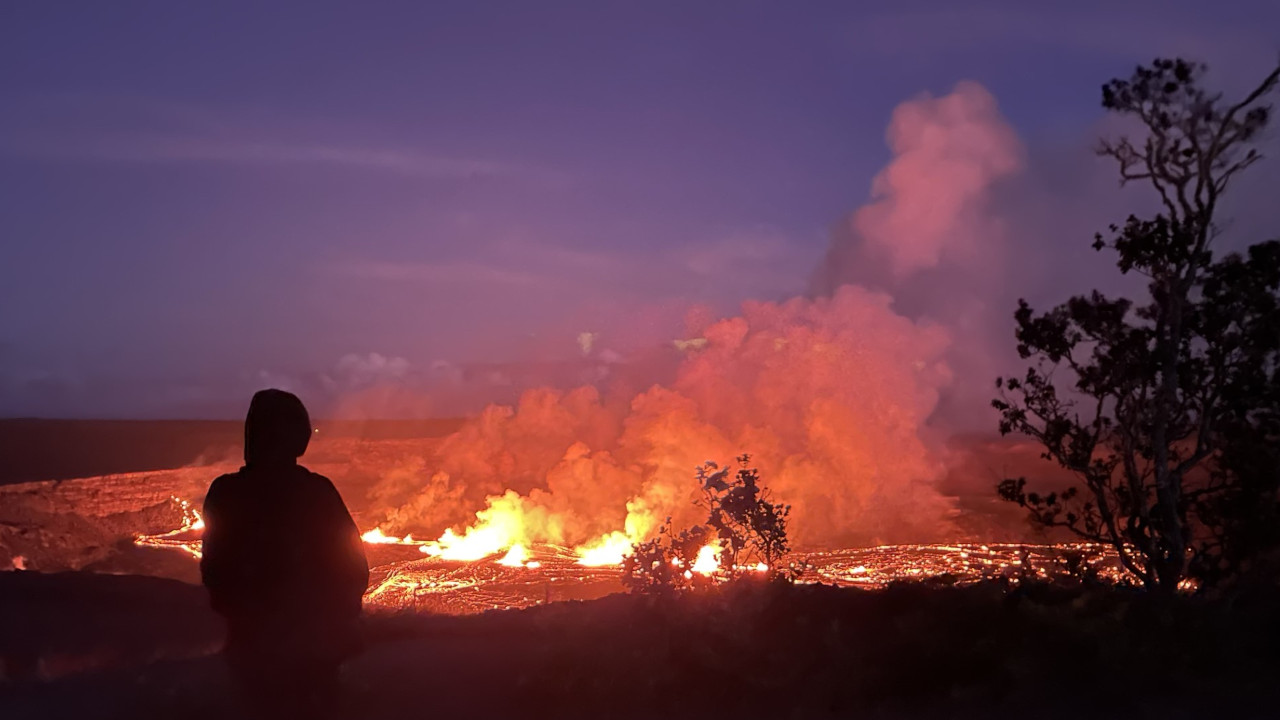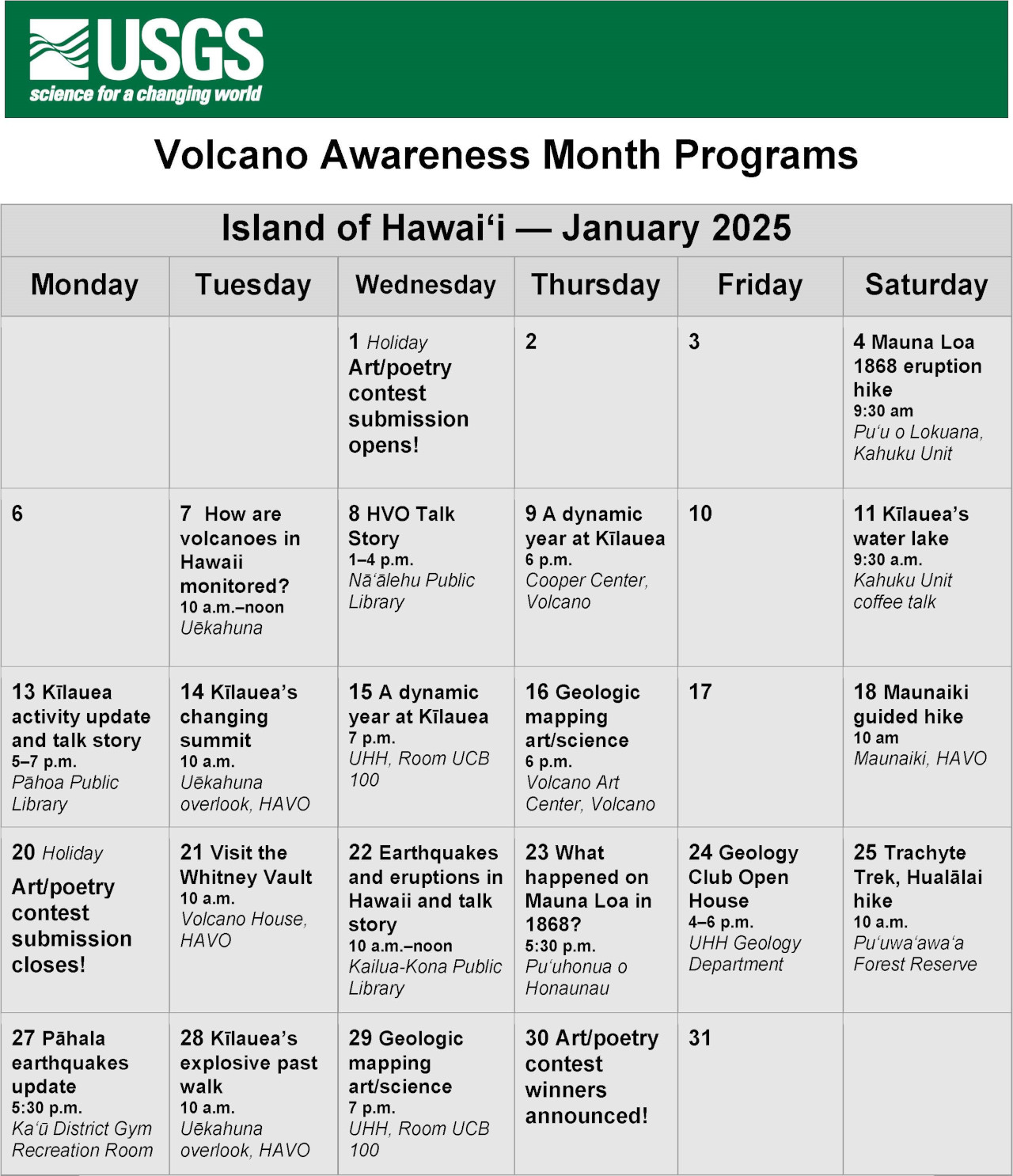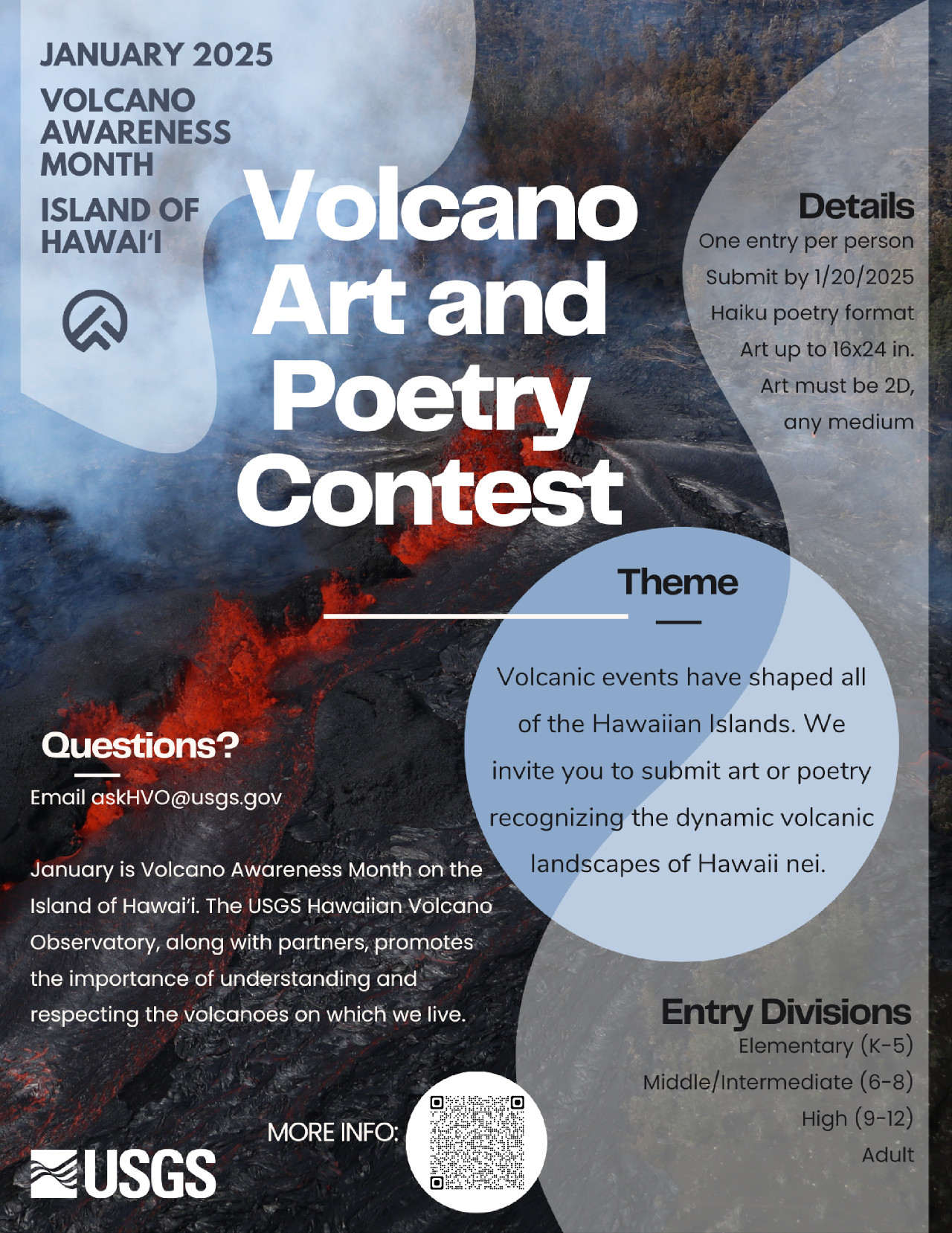
USGS: “HVO staff inspected the radio telemetry site at the summit of Mauna Loa and found wind damage to several components. Mauna Kea is in the background.” (USGS photo by M. Patrick)
(BIVN) – Hawaiʻi island volcanoes are not erupting, and there are no signs of an imminent eruption as the new year approaches.
The USGS Volcano Alert level for Kīlauea is ADVISORY, and the level for Mauna Loa is NORMAL. Elevated earthquake rates beneath Kīlauea summit and upper East Rift Zone continued this week.
Once January arrives, the USGS Hawaiian Volcano Observatory will once again hold a series of talks for Volcano Awareness Month. It is the topic of this week’s Volcano Watch article, written by USGS HVO scientists and affiliates:
The USGS Hawaiian Volcano Observatory monitors the six currently active volcanoes in Hawaii, but past eruptions have shaped all of the Hawaiian Islands. Join us in January 2025 for Volcano Awareness Month, an opportunity to learn about volcanic activity in Hawaii over the past year and beyond, or—new for this upcoming edition—submit art or poetry recognizing Hawaii’s volcanic history.
From Lēʻahi (Diamond Head) on Oʻahu to the changing caldera at the summit of Kīlauea volcano on the Island of Hawaiʻi, our landscape is shaped by volcanic processes and events. 2024 has been another year of dynamic volcanic activity on the Island of Hawaiʻi, with Kīlauea eruptions occurring outside of Kaluapele (the summit caldera) for the first time since 2018. Multiple intrusions into the upper portions of the Southwest Rift Zone and East Rift Zone culminated in a one-day eruption southwest of the caldera on June 3, and an eruption in and near Nāpau Crater on the middle East Rift Zone from September 15-20.
Volcano Awareness Month is organized each January by the USGS Hawaiian Volcano Observatory (HVO), along with close partners at Hawai‘i Volcanoes National Park, the University of Hawai‘i at Hilo, the Hawai‘i County Civil Defense Agency, and other organizations. During January 2025, HVO will host talks and guided walks around the Island of Hawaiʻi to share information on a range of volcano-related topics. Come learn about volcanic activity and earthquakes over the past year, discover the island’s extensive history of past eruptions and earthquakes, or hear how we monitor, map, and study volcanoes in Hawaii.
The Kīlauea Visitor Center auditorium will be closed this coming January, so instead of weekly After Dark in the Park presentations as in years past, HVO scientists will be doing talks and walks on Tuesdays in Hawaiʻi Volcanoes National Park. Join HVO staff as they discuss the network of instruments monitoring Hawaii’s volcanoes on January 7, describe Kīlauea’s ever-evolving summit caldera on January 14, walk into the Whitney Vault (built in 1912 to host volcano monitoring equipment) on January 21, or explain Kīlauea’s explosive past during a guided walk on January 28.
Additional guided hikes will take place on Saturdays in January. Learn about the 1868 eruption while walking the Puʻu o Lokuana trail in the Kahuku Unit of Hawaiʻi Volcanoes National Park on January 4. Hike to Maunaiki in the Kaʻū Desert of Hawaiʻi Volcanoes National Park—which erupted in 1919–1920—on January 18. On January 25, trek the slopes of Hualālai to learn about unique trachyte deposits in Puʻuwaʻawaʻa Forest Reserve.
Talks summarizing eruptive activity and earthquakes over the past year will take place at Cooper Center in Volcano village on January 9, Pāhoa Public Library on January 13, the University of Hawaiʻi at Hilo on January 15, and Kailua-Kona Public Library on January 22.
Learn the art and science of geologic mapping in Hawaii during a talk at the Volcano Art Center in Volcano village on January 16. This program will be repeated at the University of Hawaiʻi at Hilo campus on January 29.
Other programs include a talk story opportunity with HVO staff at the Nāʻālehu Public Library on January 8, a talk in Pāhala on January 27 about earthquakes happening deep beneath that region since 2019, and a Geology Department open house at the University of Hawaiʻi at Hilo on January 24.
Whether you can join us at an in-person Volcano Awareness Month event in January 2025 or not, we invite you to enter a new art and poetry contest, open January 1–20. Submit a haiku poem or art in any medium (but no larger than 16×24 inches in size) that is related to volcanic landscapes or eruptions in Hawaii. Winners in several categories will be announced in a “Volcano Watch” article at the end of January, and a selection of entries will be on display at a scientific conference on caldera-forming eruptions (such as Kīlauea’s in 2018) being hosted in Hilo in February 2025.
We hope to see you at a Volcano Awareness Month event in January 2025 and look forward to the art and poetry submissions! Learn more about January 2025 Volcano Awareness Month events and the art/poetry contest on HVO’s website, or email askHVO@usgs.gov




by Big Island Video News7:32 am
on at
STORY SUMMARY
ISLAND OF HAWAIʻI - January will be Volcano Awareness Month 2025, with a twist, organized by the USGS Hawaiian Volcano Observatory.